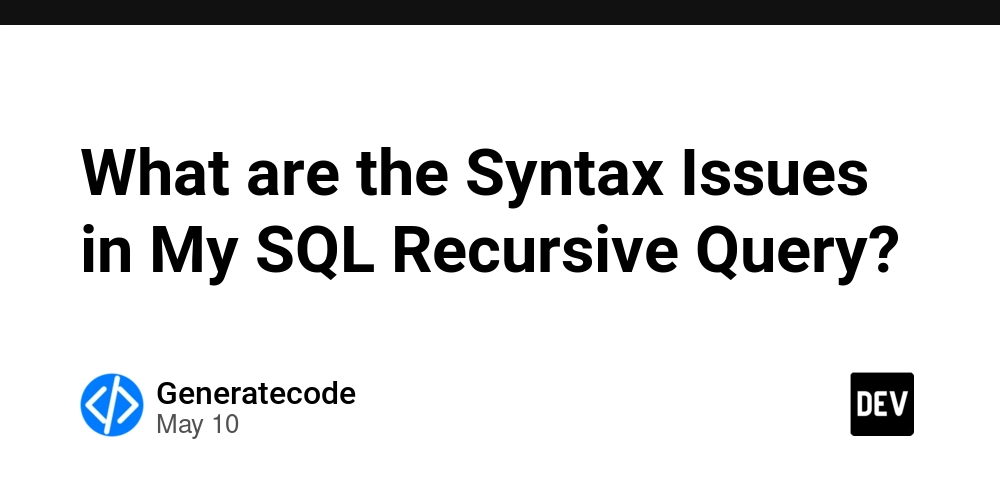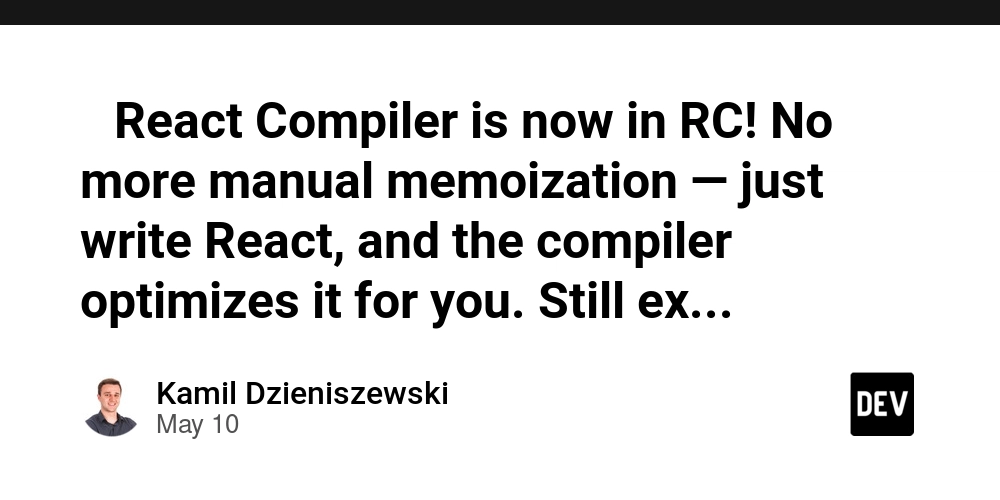What are the Syntax Issues in My SQL Recursive Query?
As a beginner in SQL, encountering syntax errors can be frustrating, particularly when you're trying to retrieve a set of random rows multiple times from a database. The query you've shared is an attempt to use a Common Table Expression (CTE) with recursion to select rows from the 'transaction_detail' table. However, it appears there are a few syntax issues that need to be addressed. Understanding the Query Structure The objective of your SQL query is to generate a recursive CTE that selects a specific number of rows (in this case, 6) from the 'transaction_detail' table where the 'company_id' matches 12345. In the initial part of the CTE, you're correctly selecting the first row matching the condition. However, there are syntax errors that lead to the error message you've received. Common Syntax Errors in SQL CTEs Issue 1: Incorrect Placement of the WHERE Clause In SQL, the placement of your WHERE clause needs to be carefully considered, especially in recursive CTEs. Your query attempts to append a second WHERE clause to the second SELECT statement, which is not permissible in this context. The flow of a recursive CTE needs to ensure that both parts are logically connected without referring to additional conditions improperly. Solution: Correct SQL Recursive CTE Syntax To fix your SQL query, you should restructure it as follows: WITH RECURSIVE cte1 AS ( SELECT 1 AS idx, company_id, field_values FROM transaction_detail WHERE company_id = 12345 LIMIT 1 UNION ALL SELECT idx + 1 AS idx, company_id, field_values FROM transaction_detail WHERE company_id = 12345 LIMIT 1 ) SELECT * FROM cte1 WHERE idx < 6; Explanation of the Changes Removed Incorrect WHERE Clause: The original placement of the WHERE idx < 6 clause was incorrect. The limit on the recursion should be handled outside of the recursive definition, thus we moved the filter to the final selection of results. Revisiting the Recursive Union: The second part of the UNION takes care of incrementing the index and fetching the next row. However, be cautious in managing your recursion depth to avoid infinite loops! Ensuring Randomness in SQL Rows To achieve a result of random rows multiple times, consider utilizing the ORDER BY RANDOM() functionality along with the recursive structure. However, note that this might introduce performance considerations depending on the size of your dataset. WITH RECURSIVE cte1 AS ( SELECT 1 AS idx, company_id, field_values FROM transaction_detail WHERE company_id = 12345 ORDER BY RANDOM() LIMIT 1 UNION ALL SELECT idx + 1 AS idx, company_id, field_values FROM transaction_detail WHERE company_id = 12345 ORDER BY RANDOM() LIMIT 1 ) SELECT * FROM cte1 WHERE idx < 6; This modification applies randomness to the selection of rows for every recursion call—resulting in diverse outputs during each execution. Frequently Asked Questions What is a Common Table Expression (CTE)? A Common Table Expression (CTE) is a temporary result set that you can reference within a SELECT, INSERT, UPDATE, or DELETE statement. It is defined within the execution scope of a single statement. What does the RECURSIVE keyword do in SQL? The RECURSIVE keyword allows the CTE to refer to itself. This enables queries to produce hierarchical or sequential data, where each subsequent call to the CTE builds upon the data returned from previous calls. How do I avoid infinite loops in recursive CTEs? To prevent infinite loops, always ensure conditions are in place to limit recursion, typically using an index or count variable that decreases with each recursion. By following these adjustments and understanding the underlying principles of your SQL query, you can effectively resolve syntax issues and enhance your SQL skills as you navigate through complex queries.

As a beginner in SQL, encountering syntax errors can be frustrating, particularly when you're trying to retrieve a set of random rows multiple times from a database. The query you've shared is an attempt to use a Common Table Expression (CTE) with recursion to select rows from the 'transaction_detail' table. However, it appears there are a few syntax issues that need to be addressed.
Understanding the Query Structure
The objective of your SQL query is to generate a recursive CTE that selects a specific number of rows (in this case, 6) from the 'transaction_detail' table where the 'company_id' matches 12345. In the initial part of the CTE, you're correctly selecting the first row matching the condition. However, there are syntax errors that lead to the error message you've received.
Common Syntax Errors in SQL CTEs
Issue 1: Incorrect Placement of the WHERE Clause
In SQL, the placement of your WHERE clause needs to be carefully considered, especially in recursive CTEs. Your query attempts to append a second WHERE clause to the second SELECT statement, which is not permissible in this context. The flow of a recursive CTE needs to ensure that both parts are logically connected without referring to additional conditions improperly.
Solution: Correct SQL Recursive CTE Syntax
To fix your SQL query, you should restructure it as follows:
WITH RECURSIVE cte1 AS
(
SELECT 1 AS idx, company_id, field_values
FROM transaction_detail
WHERE company_id = 12345
LIMIT 1
UNION ALL
SELECT idx + 1 AS idx, company_id, field_values
FROM transaction_detail
WHERE company_id = 12345
LIMIT 1
)
SELECT *
FROM cte1
WHERE idx < 6;
Explanation of the Changes
-
Removed Incorrect WHERE Clause: The original placement of the
WHERE idx < 6clause was incorrect. The limit on the recursion should be handled outside of the recursive definition, thus we moved the filter to the final selection of results. - Revisiting the Recursive Union: The second part of the UNION takes care of incrementing the index and fetching the next row. However, be cautious in managing your recursion depth to avoid infinite loops!
Ensuring Randomness in SQL Rows
To achieve a result of random rows multiple times, consider utilizing the ORDER BY RANDOM() functionality along with the recursive structure. However, note that this might introduce performance considerations depending on the size of your dataset.
WITH RECURSIVE cte1 AS
(
SELECT 1 AS idx, company_id, field_values
FROM transaction_detail
WHERE company_id = 12345
ORDER BY RANDOM()
LIMIT 1
UNION ALL
SELECT idx + 1 AS idx, company_id, field_values
FROM transaction_detail
WHERE company_id = 12345
ORDER BY RANDOM()
LIMIT 1
)
SELECT *
FROM cte1
WHERE idx < 6;
This modification applies randomness to the selection of rows for every recursion call—resulting in diverse outputs during each execution.
Frequently Asked Questions
What is a Common Table Expression (CTE)?
A Common Table Expression (CTE) is a temporary result set that you can reference within a SELECT, INSERT, UPDATE, or DELETE statement. It is defined within the execution scope of a single statement.
What does the RECURSIVE keyword do in SQL?
The RECURSIVE keyword allows the CTE to refer to itself. This enables queries to produce hierarchical or sequential data, where each subsequent call to the CTE builds upon the data returned from previous calls.
How do I avoid infinite loops in recursive CTEs?
To prevent infinite loops, always ensure conditions are in place to limit recursion, typically using an index or count variable that decreases with each recursion.
By following these adjustments and understanding the underlying principles of your SQL query, you can effectively resolve syntax issues and enhance your SQL skills as you navigate through complex queries.













































































